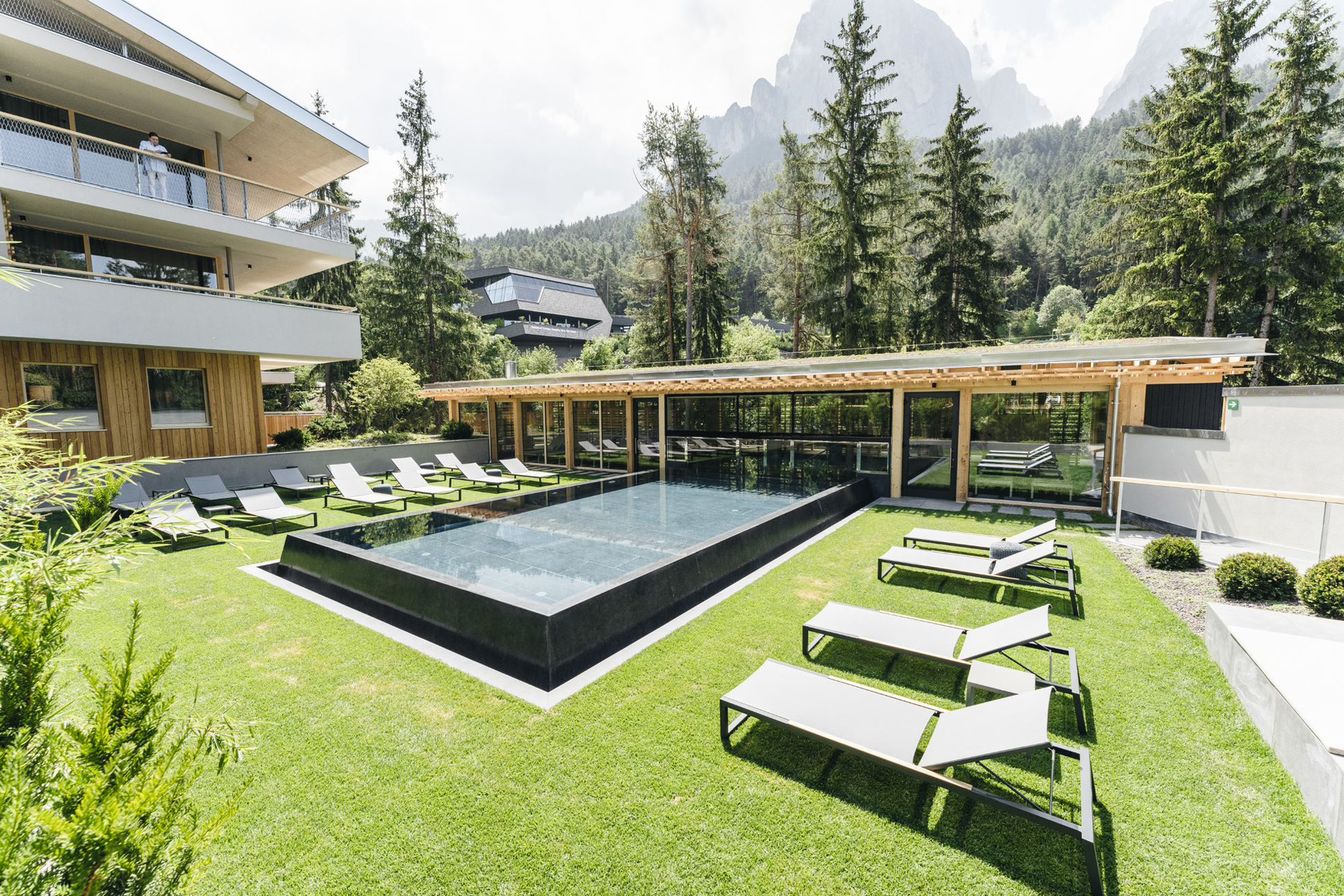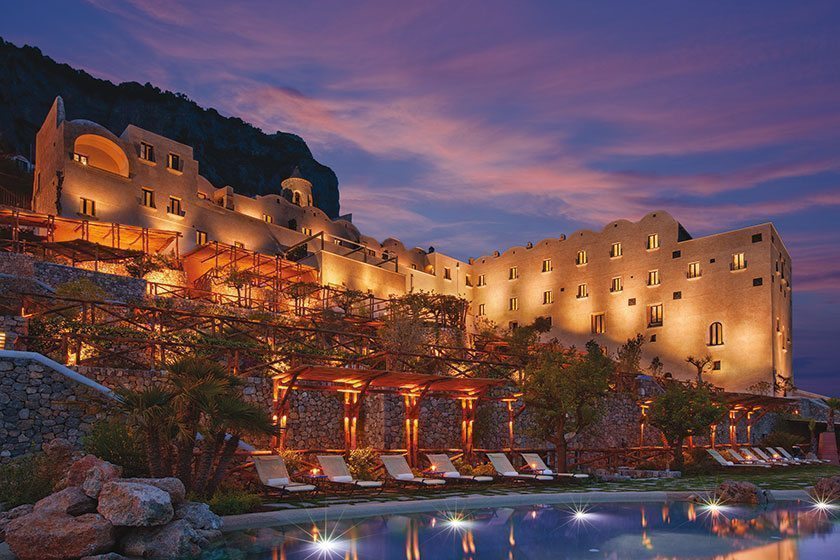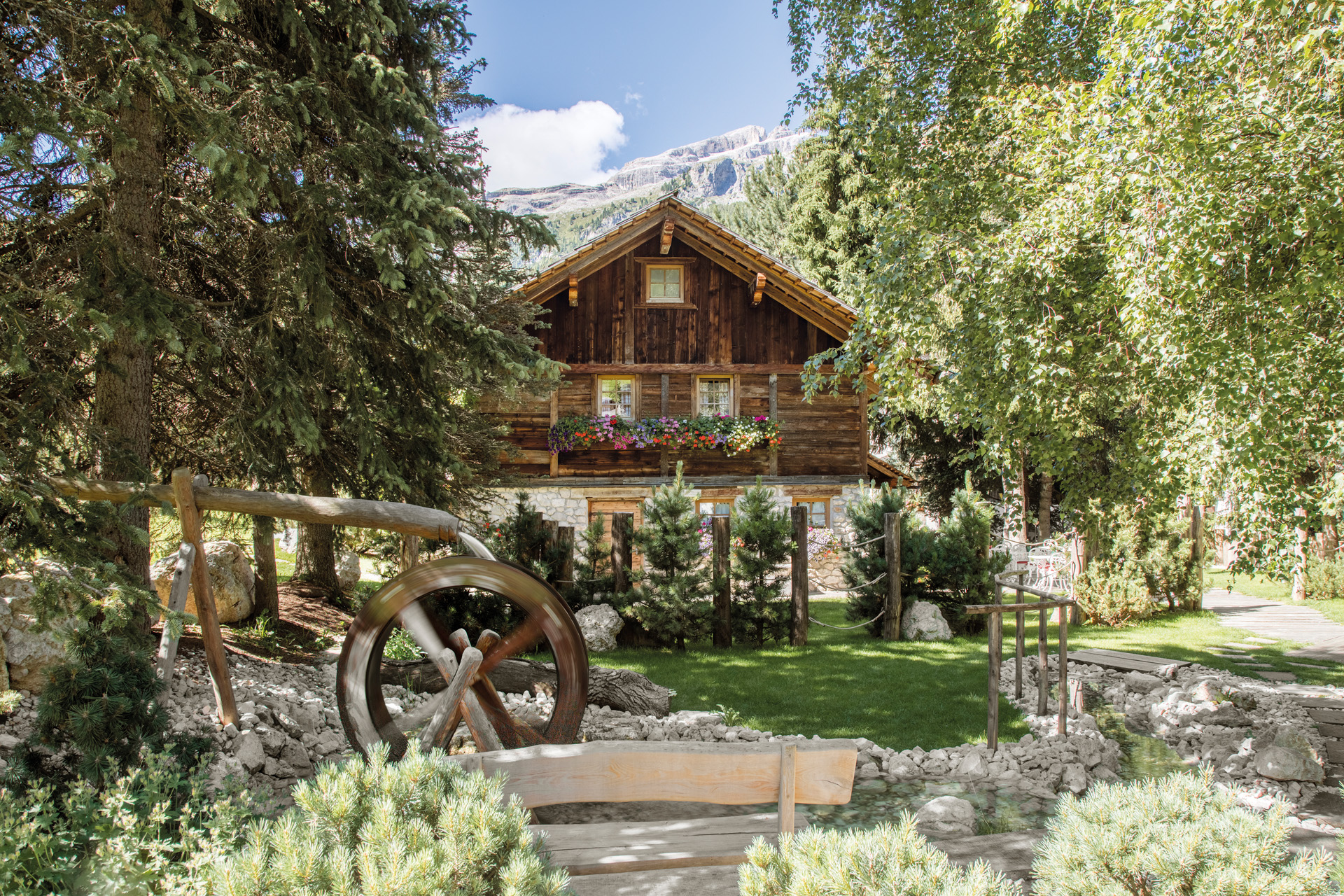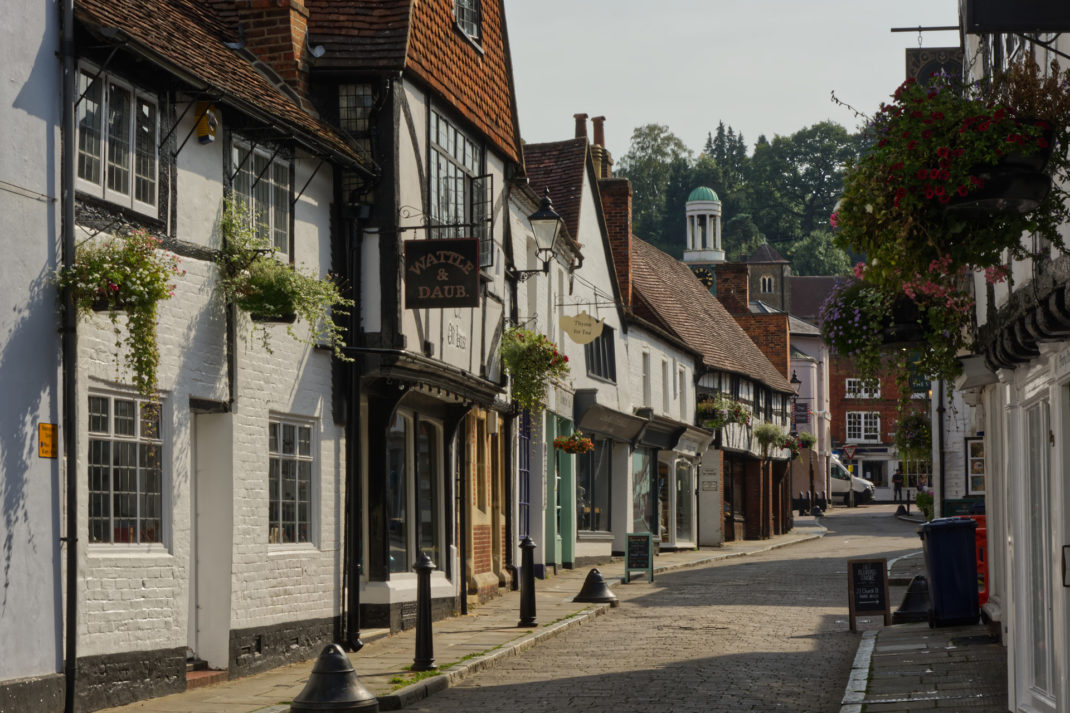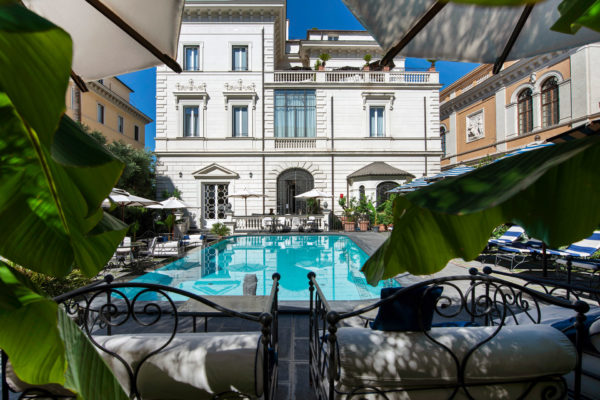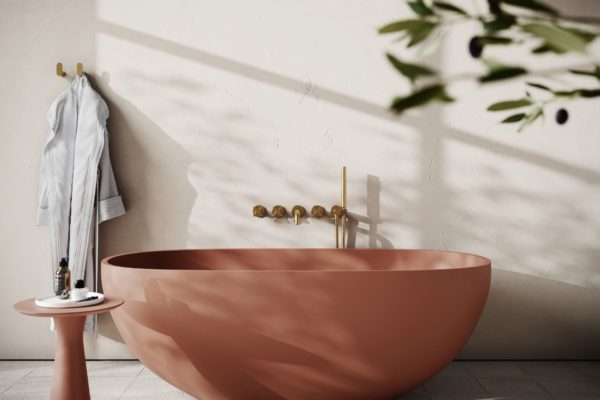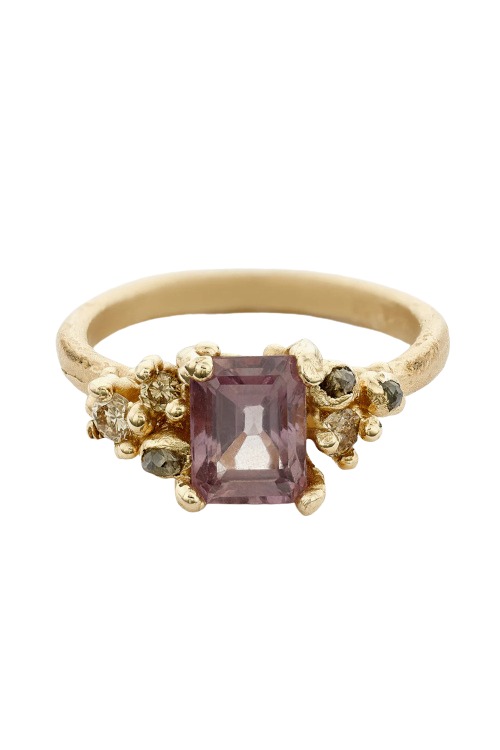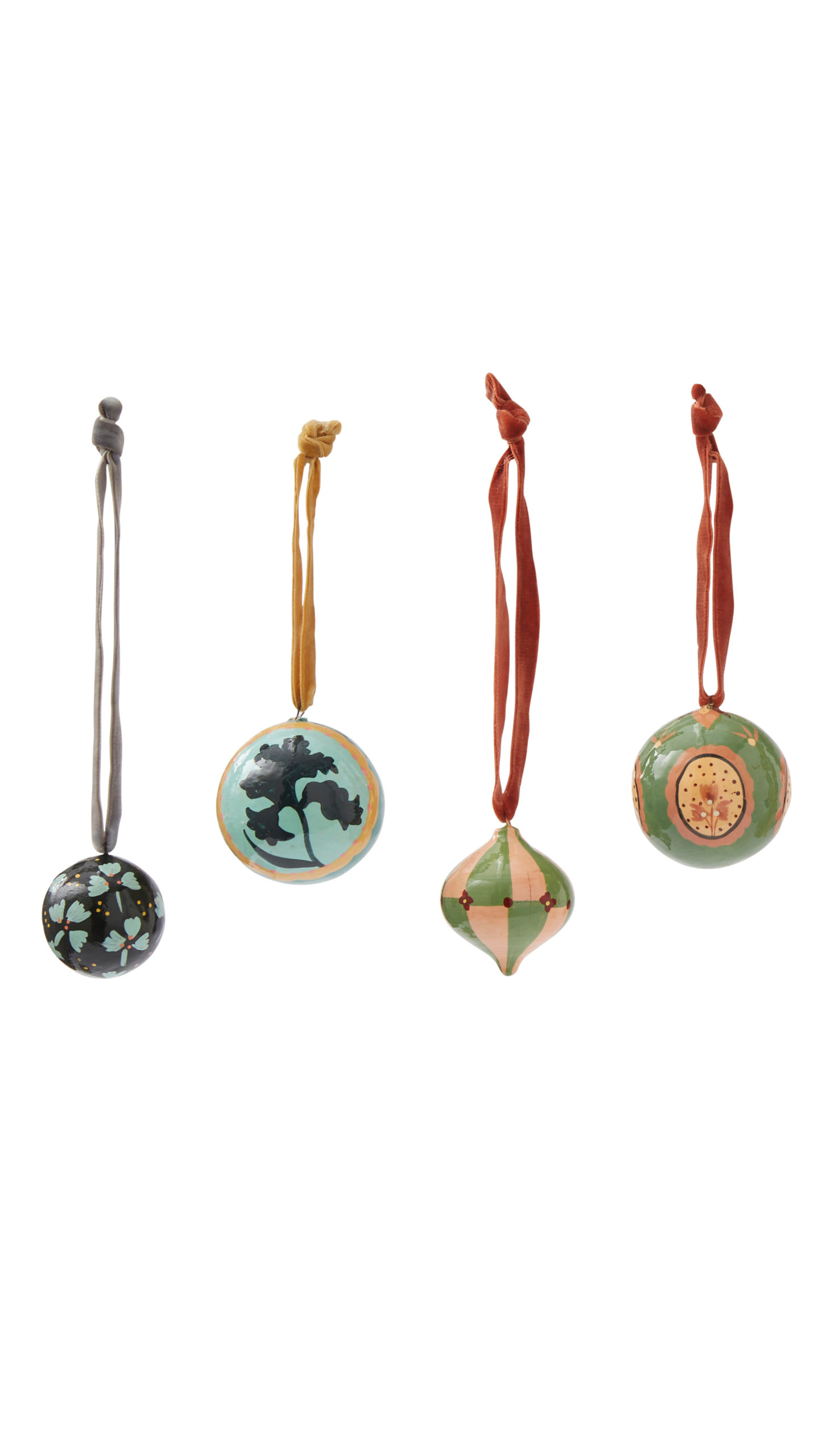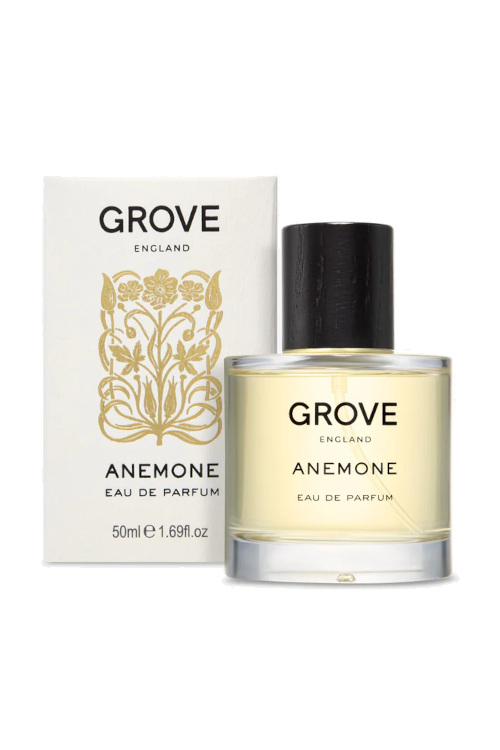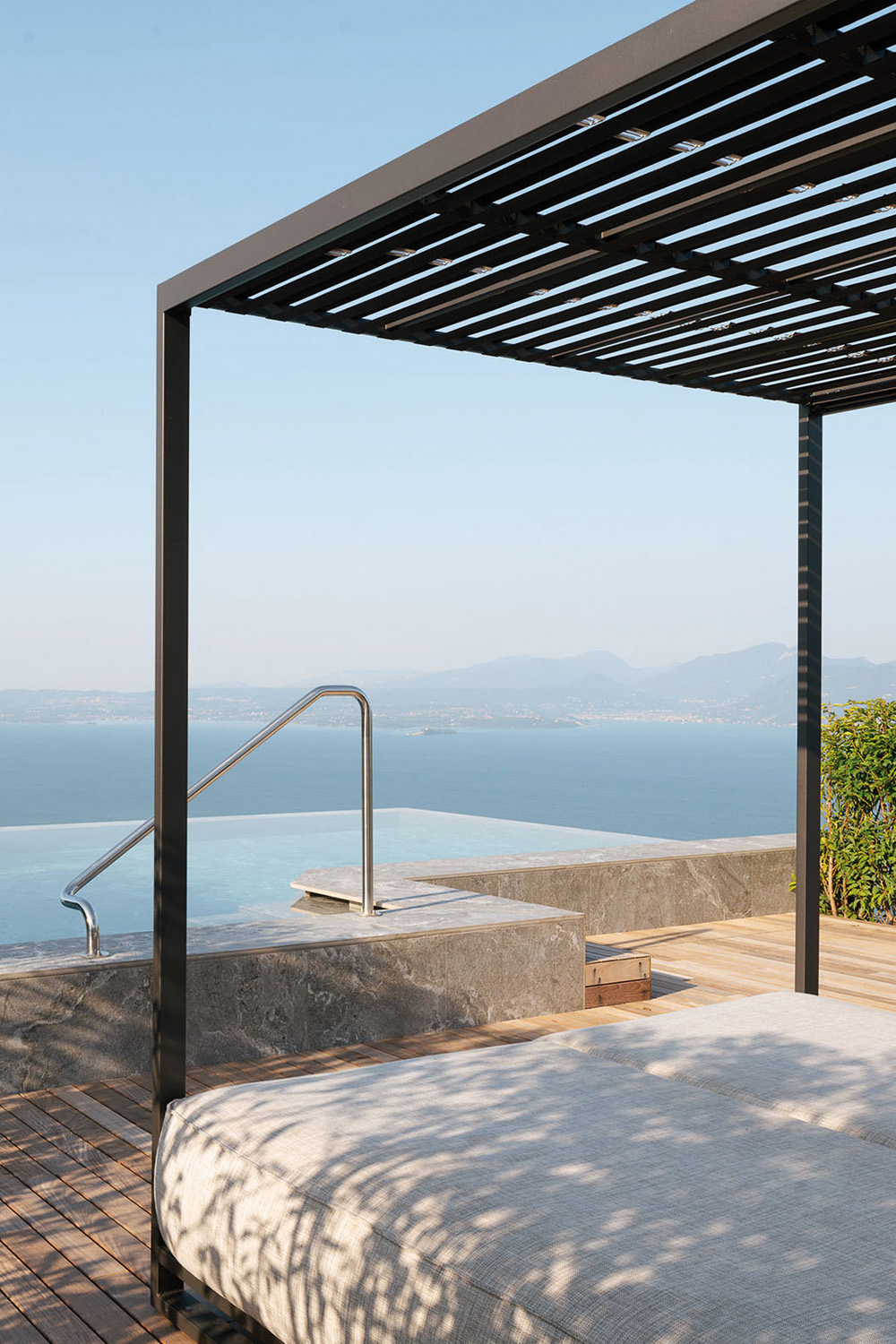
Roman Holiday: 10 Italian Hotels For A Shoulder Season Escape
By
2 months ago
Now the children have returned to school, it’s time to plan a sojourn of Italian delights – without the crowds
Looking for the best hotels in Italy? Live la dolce vita at these sumptuous Italian sojourns. The C&TH team reveal their top picks below, all tried and tested.
10 Best Hotels In Italy 2025
Monteverdi, Tuscany
He’s being dubbed the Mini Medici. That’s Michael Cioffi, everyone’s favourite American lawyer. He’s bought part of a medieval Tuscan hilltop village – it boasts just 30 houses and a year-round population of 10 – and turned it into an upmarket holiday spot cum cultural hub. And one with gawpingly beautiful views over the Val d’Orcia, a UNESCO designated valley. The Mini Medici’s houses and boutique hotel are done up the Arte Povre way by Ilaria Miani, the countess of rural chic. Think thick medieval walls and reclaimed 13th century beams, alongside underfloor heating and power showers as ‘art’. Rather than confined within a single building, hotel rooms and suites are dispersed throughout the medieval village, alongside two pools, a spa, yoga studio, gym and art gallery.
For dining there’s Oreade, a 32-seat restaurant with Executive Chef Giancarla Bondoni at the helm, and The Enoteca, with outdoor tables overlooking the 14th-century church of Sant’ Andrea, Monte Cetona and the hills of Val d’Orcia. The Mini Medici has founded a Jazz and Blues festival, and is planning a film festival too. Monteverdi has even got its own Etruscan dig. It’s a place for five star tourists and artists-in-residence – all wanting a sliver of life in the very slow lane. Go there for bruschetta and Brunello; for contemplation and culture. He’s definitely swinging a Renaissance revival on his part of the hill. You can’t get more dolce vita than that. By Daisy Finer
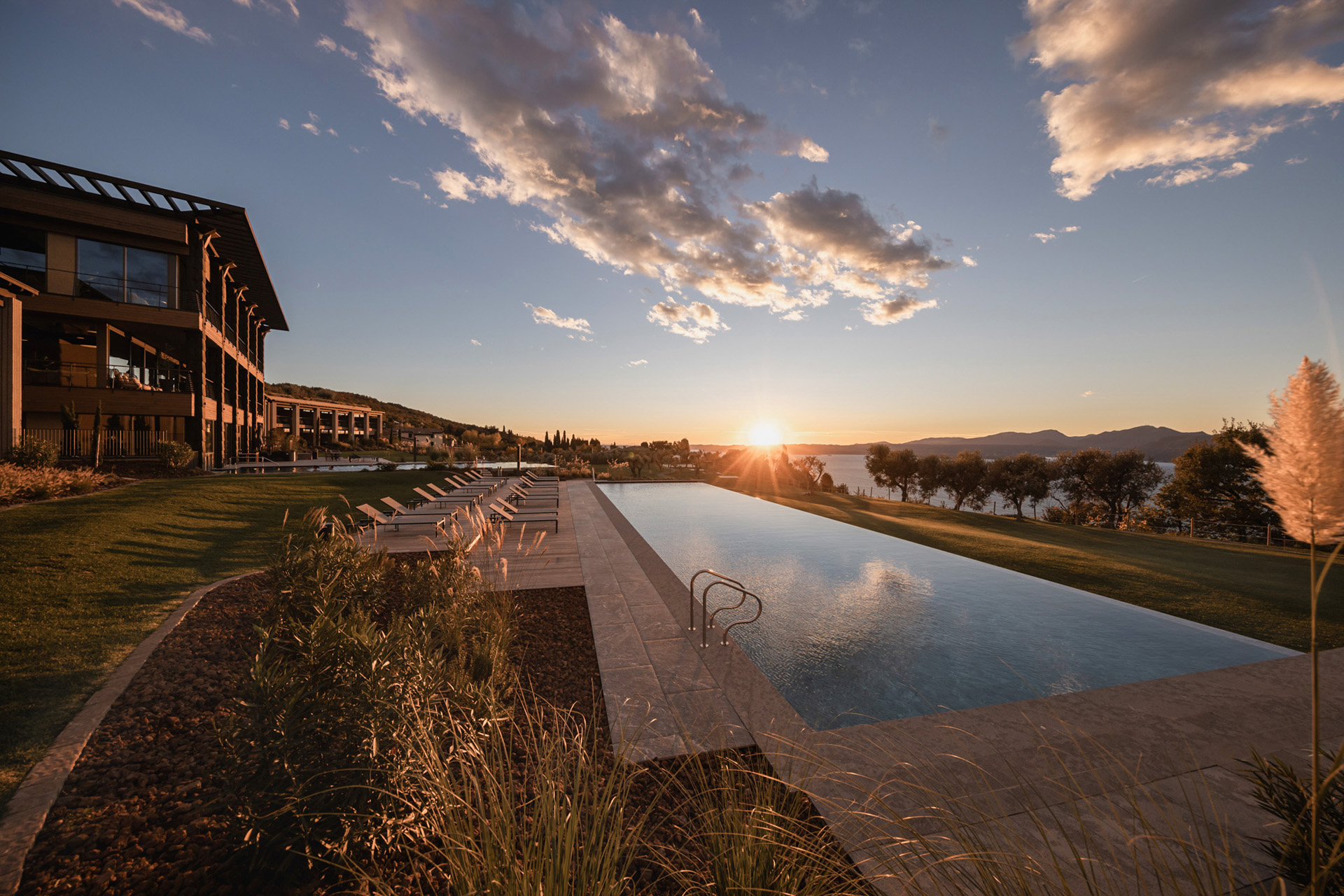
(© Florian Andergassen)
Cape of Senses, Lake Garda
Two hundred metres above Lake Garda is the region’s newest luxury hotel, Cape of Senses. Established by two sons and their father (who are seasoned hoteliers in the Dolomite mountains), this new hotel is a symbol of their passion for Lake Garda. Opening in July 2023, each aspect of the contemporary, newly-built hotel looks over the vast lake among many olive trees that have been re-homed around the previously empty plot of land. Championing Italian hospitality, guests dine on ingredient-led dishes that reflect culinary influences from Austria, France and beyond. This notably includes the likes of rabbit ravioli and beef tartare served with oysters and glasses of local wine.
Fifty-five neutral and luxuriously finished suites frame romantic views of the lake, with private pools and free-standing bathtubs, too. Meanwhile, the 2,000 sqm Senses Spa sits at the centre of the property. Here, find the ‘Spa Library’ which is a serene place to sit back and enjoy a growing collection of novels, guides and coffee table books pre or post-treatment. Consciously designed, Cape of Senses blends into the landscape to ensure little impact on its iconic setting – so much so that it disappears from the human eye from the opposite side of the lake. By Georgie Bentley-Buckle
Villa San Michele, Florence
A 15th-century former monastery high on the hillside with jaw-dropping views of Florence and the Arno Valley below, Villa San Michele is Michelangelo’s vision brought to life (he designed the façade of the main building). Landscaped gardens are bursting with heavenly scented lemon trees and rambling roses. Rooms are classic, but, crucially, fresh: think walnut furniture, Carrara marble and cool, neutral walls.
But the big news here, the real jackpot for families, is the complimentary ‘Smile Club’ (for ages 4-12) and kids’ concierge who will dream up fun-filled activities to keep sprats entertained around the clock. They (and you) can go hunting for treasure at the Uffizi Museum, visit an ice-cream factory or explore the hotel’s enchanting secret gardens, ending up eating a picnic lunch in the woods. Budding chefs can whip up pizza and pasta in the hotel’s cookery school (there’s a charge for this, but boy is it worth it); there are jewellery making and messy painting sessions for those feeling arty and little ones can even learn their first few works of Italian. Bellissima! By Daisy Finer
La Posta, Tuscany
The thermal pools bubble away excitedly as if telling the story of everyone who has passed through. Romans and Etruscans, popes and kings, even pilgrims on the Via Francigena have made the journey to bathe in the mineral-rich waters of this Tuscan hilltop village. For today’s batch of travellers, the attraction lies in slowing down, settling in and breathing to the local rhythm: a medley of activities that include apéritivo by the village’s centrepiece spring, bike rides through the vineyard- speckled landscape of the Val d’Orcia and visits to neighbours like Pienza, where every second store sells shapely wheels of pecorino cheese.
Once a relay station, the property has a cinematic view towards the towering peak of Rocca d’Orcia, whose presence is felt while savouring tiny buttons of bottoni pasta exploding with cacio di fossa cheese and fresh asparagus, playing a hand of cards in the evening games room, or sipping a negroni in the emerald-green Bar Verde. Each of the 35 rooms has been recently refreshed in an eclectic, vintage styling, enhancing the feeling of finding yourself somewhere suspended in time. By Chrissie McClatchie
L’Albereta, Brescia
One of those turn of the century villas that embodies the best of Italian hospitality, L’Albereta keeps the oenophile, the gourmet and the spa junkie purring for days: surrounded by its own vineyards, with a restaurant once presided over by the acknowledged father of modern Italian cuisine and the Chenot Espace L’Albereta spa. The wine is Franciacorta, Italy’s answer to Champagne, and you can stroll through the impeccable vineyards that surround the hotel, and tour the two wineries, Bellavista and Contadi Castaldi, founded by its owner, Vittorio Moretti.
As for the spa, it excels in detox treatments (a suitable dinner menu is offered) such as the Energetic Massage that employs glass suckers to remove energy blockages and improve drainage (a lot better than it sounds). Two other elements make Relais & Châteaux L’Albereta one of the best hotels in Italy: it’s family owned, run by Signor Moretti’s modest daughter, and it stands on a hill above Iseo, the least known and most intriguing of the Italian Lakes. By Daisy Finer
Sensoria Dolomites
Connecting guests with luxury for ‘the soul’ in the Dolomites is Sensoria. Championing south Tyrolean hospitality, this private, family-owned hotel has been reimagined by the former owner’s daughter. Taking the property under her wing with her husband, here stands an entirely new building that blends a minimalist Scandinavian design concept with stylish Japanese touches. Part of a new wave of hotels redefining an opulent all-inclusive concept, this dog-friendly, Alpine oasis elegantly dishes up flavours of the Dolomites.
Wellness is also a leading element with an aesthetic indoor and outdoor swimming pool that reveals majestic views of Alpe di Siusi (the largest high plateau in Europe). A signature sweat-inducing experience includes the twice daily ‘Aufguss’ sauna infusions that unite guests together in the hotel’s larger-than-life sauna. During the summer months, the UNESCO World Heritage site is the ultimate outdoor playground to hike, bike and play golf; before transforming into a winter wonderland. By Georgie Bentley-Buckle
Monastero Santa Rosa, Amalfi Coast
A perfect pocket of peace and pampering on the Amalfi Coast. When you want a spoiling weekend away this American-owned outpost, between Amalfi and Positano, ticks all the boxes. The views are heavenly, the staff perky and the food out of this world. There’s mozzarella as big as your fist, homemade warm bread, squid linguine, fish caught in the bay that morning… Every meal is a marathon of treats – don’t come here to diet. Instead, loll about in the rock-hewn infinity pool, retreat to the cool calm of your room (the building used to be a monastery) or hole up in the spa.
And what a spa. It’s glamorous and polished – no expense spared – but it has all the rustic, holistic vibes you seek, and the treatments use medicinal Santa Maria Novella products. There are hot candle massages, Iris scented scrubs and pedicures that will last you through the winter. OK, so the village is nothing to shout about – but if don’t mind flopping into the hotel’s comforting, decadent arms, then place this new baby grand at the top of your list. By Daisy Finer
La Perla, Dolomites
La Perla’s connection to its alpine surroundings is heartfelt in everything from its cosy wood-panelled walls to its dishes of fresh ravioli packed with nettles and spinach, foraged earlier from surrounding meadows. In the heart of the Dolomites, the 51-bedroom, five-star hotel is just over two hours from Venice, yet here, unique local Ladin culture (a mix of Italian and Bavarian influences) prevails. Founded by the Costa family in 1956, it is managed today by their sons Michil and Mathias.
In winter there’s skiing from the front door; in summer, with temperatures in the blissful mid-twenties, you can hike over icy streams and through buttercup-studded valleys, with e-bikes another option. Later, muscles can be soothed by alpine-flower oils in the newly-renovated spa (nothing traditional here), which includes a pool, two saunas and a hot/cold Kneipp bath. Despite its boutique size, the hotel boasts five superb restaurants: one Michelin-starred; all highlighting hyper- fresh local produce (think gelato from cows milked that morning). Rooms feature quirky antiques juxtaposed with ultra-modern bathrooms and bedding, ensuring the sweetest of mountain sleeps. By Julia Llewellyn Smith
The Majestic Grand Hotel, Bologna
Formerly known as ‘Baglioni’, The Majestic Grand Hotel in beautiful Bologna is the only five-star hotel in the heart of the city, however, guests needn’t look much farther anyway when looking for traditional Italian sophistication. It has hosted some of the most prestigious celebrities and characters in the world, everyone from kings to movie stars, artists to politicians and Nobel Prize winners whose loyalty as guests is down to the hotels’ undying elegance with everything from service to design and function.
Sitting in a XVIII century building, the hotel exudes luxury with its rich interiors that boast glorious pieces of art, such as the work of the Carracci brothers that live in the hotels’ restaurant, precious draperies, sleek marble and intriguing ceramics. Within its 109 Venetian-style rooms, guests can expect to find an elegant combination of traditional Italian design and modern comforts, joined together by long hallways and waiting rooms (in the most luxurious suites) that are inspired by famous artists such as Giuseppe Verdi and Giambologna.
Don’t skip supper in the hotels’ Carracci restaurant, serving fine, fresh regional cuisine such as tagliatelle and tortellini accompanied by an expert wine list. The next day, enjoy a rich breakfast in the 1800s & 1900s halls with a buffet of locally sourced foods and traditional baked goods from Gamberini, Bologna’s oldest patisserie. The hotel also boasts a wine store, terraces, a cafe open to guests and non-guests alike, a spa and comfortably grand meeting rooms – a stay at The Majestic Grand Hotel is a stay of luxury, where your needs as a guest comes first and the stunning interiors along with a rich offering of internal amenities mean you need never leave… By Daisy Finer
Anantara Convento Di Amalfi Grand Hotel, Amalfi
The 13th-century Capuchin monks knew they were onto a good thing when they set up residence in a cliffside convent high above the glittering Amalfi coast. What they lacked in luxury, these early mindfulness pioneers made up for in therapeutic pursuits such as gardening, cooking and reading, interspersed with moments of quiet contemplation. Reimagined two years ago as the five-star Anantara Convento di Amalfi Grand Hotel, the property may have had a dazzling upgrade (it first became a hotel in the 19th century), but the original ethos remains the same: you come here for peace and wellbeing.
A highlight of any visit is the Pace & Bene experience with local Franciscan Friar Marcus, who will show you the Arab Norman cloisters and adjoining chapel and join you for a stroll along the bougainvillea-covered monk’s walk. ‘Try to be at peace with yourself,’ he says. ‘Everyone here will help you stop.’ The Dei Cappuccini restaurant is as ‘o-km’ as it gets, with produce plucked fresh from the restored convent garden. For ultimate serenity, there are breathwork sessions in the cloisters. By Juliet Herd





